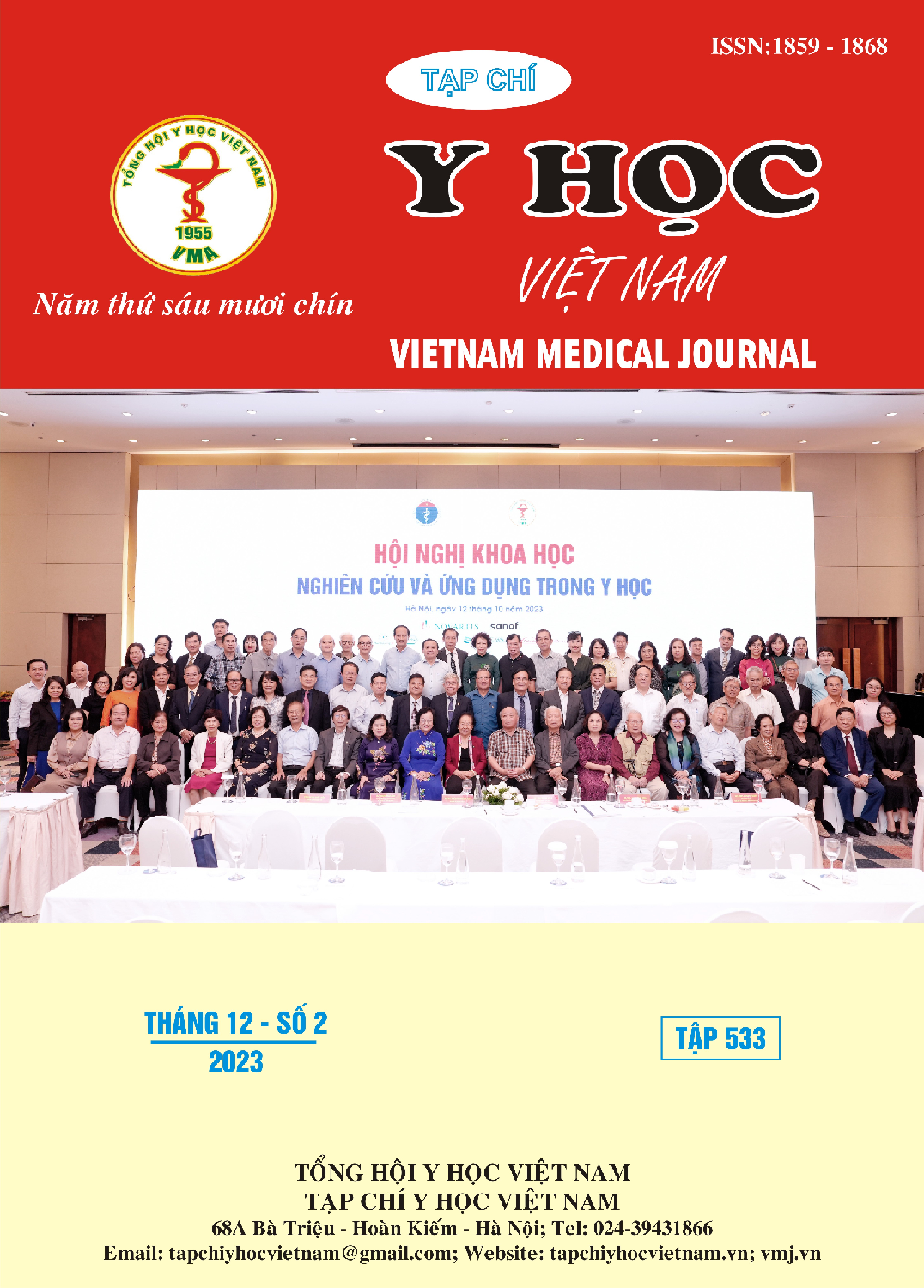EVALUATION OF EARLY TREATMENT RESULTS OF TORSION OVARIAN TUMOR AT 103 MILITARY HOSPITAL
Main Article Content
Abstract
Objectives: Review the results of vaginal birth after cesarean section at hospital 198. Subjects and methods: All pregnant women with once previous cesarean section admitted to hospital 198 have had indication to trial of labor from 2018 to 2022. Results: The duration of pushing was mainly from 30 to 60 minutes with a rate of 49.6%. There were 6 cases of no pushing, including 03 women with cervix that did not progress and 03 women with signs of fetal distress. Successful vaginal birth accounts for 84.2% and cesarean section conversion accounts for 15.8% (causes include: uterine rupture accounts for 2.3%, head failure accounts for 4.5%, cervical non-progression accounts for 4.5%). 4.5%, threatened uterine rupture accounted for 2.3% and fetal failure accounted for 2.3%). Complications and complications: Postpartum bleeding (4.5%); There were 3 cases of uterine rupture (2.25%), all were treated conservatively, there was only 01 case of neonatal death, accounting for 0.75%, there was 01 case of neonatal asphyxia (0.75%), 01 case of neonatal death. Infectious cases (0.75%), 03 cases with low Apgar (2.25%), no maternal death. Factors that have a statistically significant impact on vaginal birth outcomes include: Total time of labor monitoring (OR: 1.6; 95% CI: 1.2 - 2.2); Use oxytocin (OR 0.1; 95% CI: 0.02 – 0.4); fetal weight (OR 1.003; 95% CI: 1.001 – 1.004); interval of cesarean section (OR 0.9; 95% CI: 0.92 - 0.99) and history of vaginal delivery (OR 4.5; 95% CI: 1.03 - 20.08). Conclusion: Pregnant women with once previous cesarean section can follow up vaginal delivery if eligible. Vaginal birth after cesarean section should be performed by an experienced specialist and a medical facility with good resuscitation facilities and conditions.
Article Details
References
2. J. Rao, D. Fan, H. Ma và cộng sự (2022). Is there an optimal inter-delivery interval in women who underwent trial of labor after cesarean delivery (TOLAC)? Reproductive Health, 19 (1), 14.
3. K. D. Gregory, L. M. Korst, P. Cane và cộng sự (1999). Vaginal birth after cesarean and uterine rupture rates in California. Obstetrics & Gynecology, 94 (6), 985-989.
4. B. L. Flamm, O. W. Lim, C. Jones và cộng sự (1988). Vaginal birth after cesarean section: Results of a multicenter study. Am J Obstet Gynecol, 158 (5), 1079-1084.
5. S. A. Gilbert, W. A. Grobman, M. B. Landon và cộng sự (2012). Elective repeat cesarean delivery compared with spontaneous trial of labor after a prior cesarean delivery: a propensity score analysis. Am J Obstet Gynecol, 206 (4), 311.e311-319.
6. A. Asgarian, N. Rahmati, F. Nasiri và cộng sự (2020). The Failure Rate, Related Factors, and Neonate Complications of Vaginal Delivery after Cesarean Section. Iran J Nurs Midwifery Res, 25 (1), 65-70.
7. E. P. Sakala, S. Kaye, R. D. Murray và cộng sự (1990). Oxytocin use after previous cesarean: why a higher rate of failed labor trial? Obstet Gynecol, 75 (3 Pt 1), 356-359.
8. R. Maroyi, B. Naomi, M. K. Moureau và cộng sự (2021). Factors Associated with Successful Vaginal Birth After a Primary Cesarean Section in Women with an Optimal Inter-Delivery Interval. Int J Womens Health, 13, 903-909.


